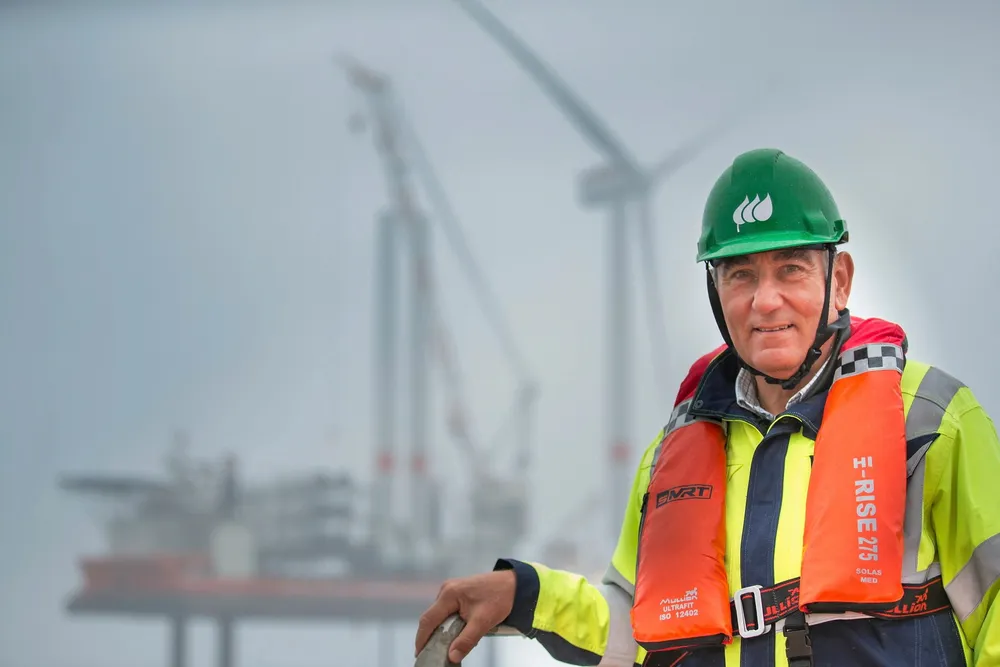France warned over big offshore wind target miss
France has revamped its system for allocating offshore wind acreage to support long-term aims, but study issues warning on permits and nuclear preference

France could fall far short of its offshore wind installation targets unless it streamlines permitting and creates a more favourable investment climate, according to new research by the Institute for Energy Economics and Financial Analysis (IEEFA).
France has been drawing praise for making its offshore wind sector more attractive with long-term measures such as publication of a new marine spatial plan, raising deployment targets and introducing a one-stop shop approach to auctions that pushes the connection scope over to transmission system operator RTE.
Under these revised targets, France is aiming to have 20GW of offshore wind capacity awarded by 2030 and 18GW actually in operation by 2035. The target for 2050 is set at 45GW, with between 50% and 75% of this expected to be floating wind.
But global think-tank IEEFA suggested that permitting and deeper funding questions continue to raise doubts about the feasibility of French targets.
Despite these lofty ambitions, the IEEFA said France risks achieving little more than 3GW of operational offshore wind by 2032 unless it "urgently streamlines offshore wind licensing and shorten the timeframe for legal challenges to projects awarded in tenders".
“A combination of complex permitting, legal challenges and focus on nuclear power have held back offshore wind development in France,” said Jonathan Bruegel, an IEEFA power sector analyst.
“There is a lack of political and financial support for offshore wind in France, which has struggled to provide the same level of certainty for investors as many other European countries.
Despite carrying out numerous tenders since 2011, IEEFA pointed out, France has just 1.5GW of operational offshore wind and the technology provides 1% of the country’s electricity.
The IEEFA also suggested that policy support for nuclear power has diverted financial resources away from renewables.
“Action must be taken to turn the tide on French offshore wind development so that the technology can effectively strengthen the country’s energy security and help replace its ageing fleet of nuclear power plants, most of which will reach the end of their planned operational lifetimes by 2030,” Bruegel commented.
To address the obstacles to offshore wind deployment it identified. the IEEFA made recommendations including:
- Development of a structured nuclear phase-down plan that prioritises offshore wind and other renewables as a pillar.
- Increasing investment in developing "a modernised, smarter and more flexible grid that can handle intermittent renewables".
- Reform of market regulations that ends priority access to the grid and preferential feed-in tariffs for nuclear power and makes renewables eligible for capacity mechanism payments.
- Offering stable policies and incentives as well as more public investment directed to offshore wind and renewables infrastructure.
Too pessimistic?
“There certainly are challenges, but there is enough progress on existing projects to suggest that deployment should be in the range of 5GW by 2031," said Pierre Warlop, France country director for international consultancy firm Natural Power.
French offshore wind capacity in the pipeline, according to industry body France Renouvelables
AO round Wind farm (capacity) COD
AO1 Saint Nazaire (480MW) Operational
AO1 Saint-Brieuc (496MW) Operational
AO1 Fécamp (497MW)) Operational
AO1 Courseulles-sur-Mer (497MW) 2026
AO2 Îles d'Yeu and Noirmoutier (496MW) 2025 or 2026
AO2 Dieppe-le-Tréport (496MW) 2026
AO3 Dunquerqe (600MW) 2029 or 2030
AO4 Centre Manche 1 (600MW) 2031
AO5 Bretagne Sud (270MW) 2031
Industry body France Renouvelables takes a more robust view, predicting that France will have 10.4GW of offshore wind installed by 2032/2033, including 1.5GW currently in construction, 2.4GW in development and 5GW to be awarded by 2026.
Warlop describes a marked improvement in the conditions for building out offshore wind in this way, but agrees that permitting and legal challenges is still a top concern for developers in France.
"We have seen this happen in Germany, but in France, there is still no maximum duration allowed for issuing bodies to deliver."
He offered the same criticism of French commitments to providing de-risking studies, arguing that the positive impacts can be lost if the data is not ready ahead of deadlines for submitting environmental impact assessments or, for example, applications under clean industry legislation.
While RTE responsibility for connections is welcomed, the need to align parallel permitting processes for power generation and grid scopes can impact timelines, Warlop suggested.
Ocean Winds
Some of these concerns are already discernible on one of two floating offshore wind projects that were awarded under AO6 last December.
Ocean Winds was awarded 250MW of capacity for the Narbonnaise 1 wind farm area — now known as Eoliennes Flottantes d’Occitanie (EFLO) — located in the Gulf of Lion, in the Mediterranean.
The consultation process for EFLO has already begun but the project may not reach a final investment decision before the end of the decade, and is not expecting to reach commercial operation any time before 2032, according to the company's business developer for France, Dominique Moniot.
The main reason for this timeline is the company's assessment that it could take up to 18 months to complete the permitting process and then there is a strong possibility of legal challenges under the French system, Moniot told an industry event last month.
(Copyright)